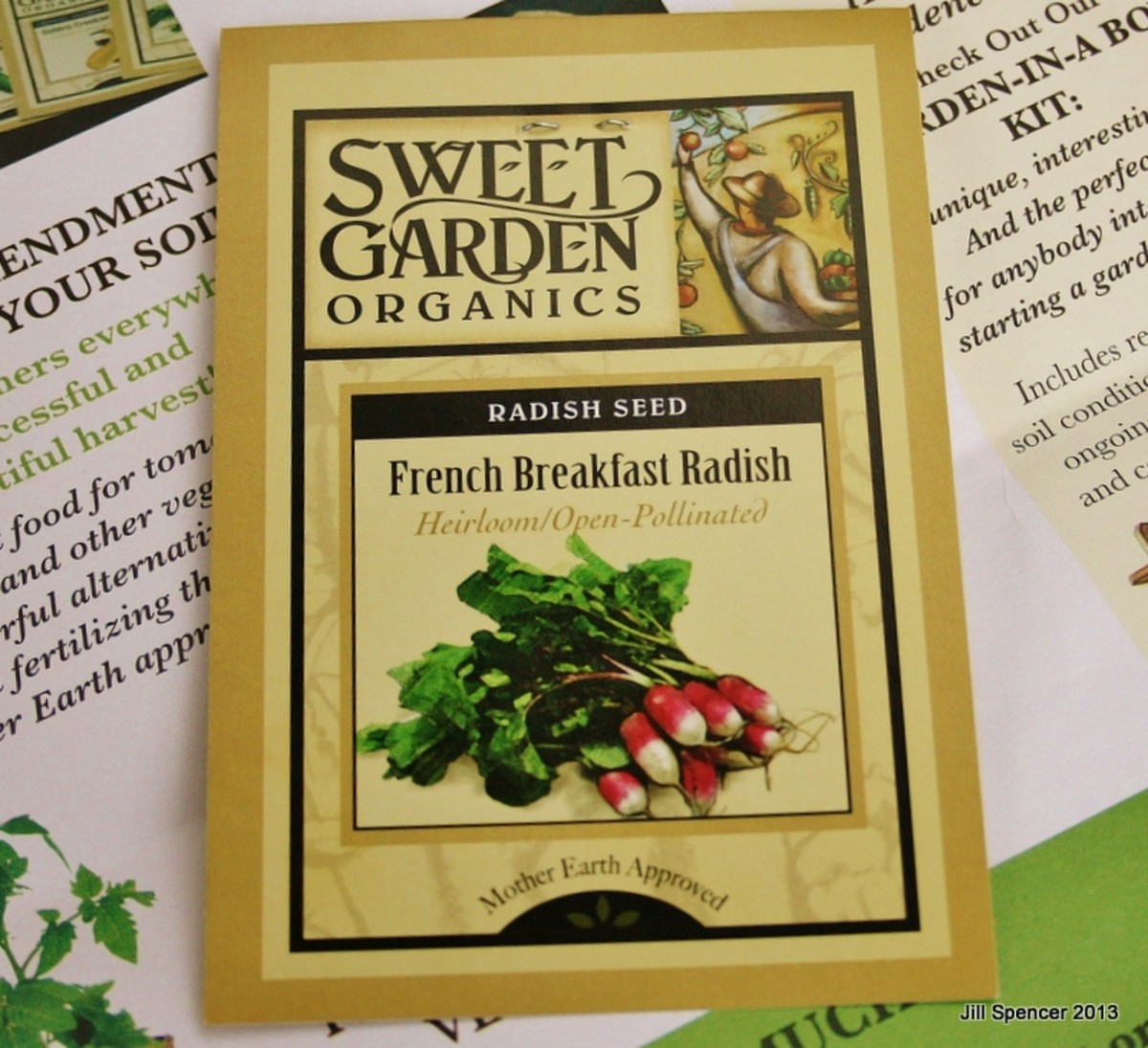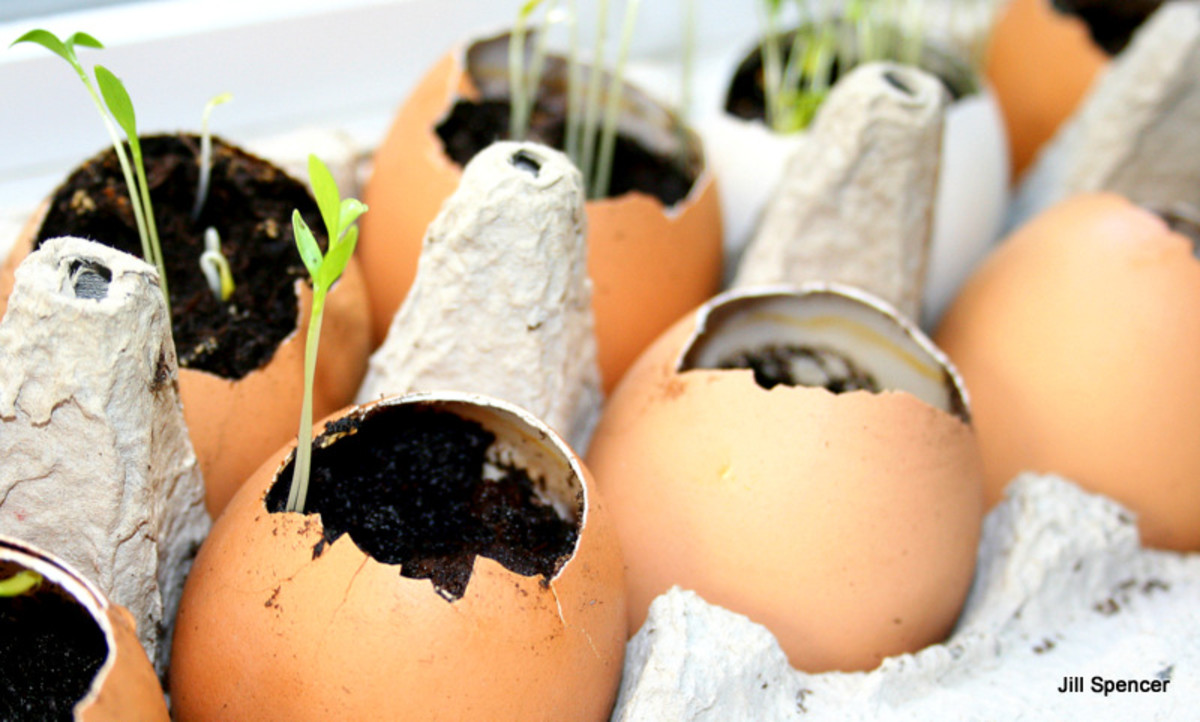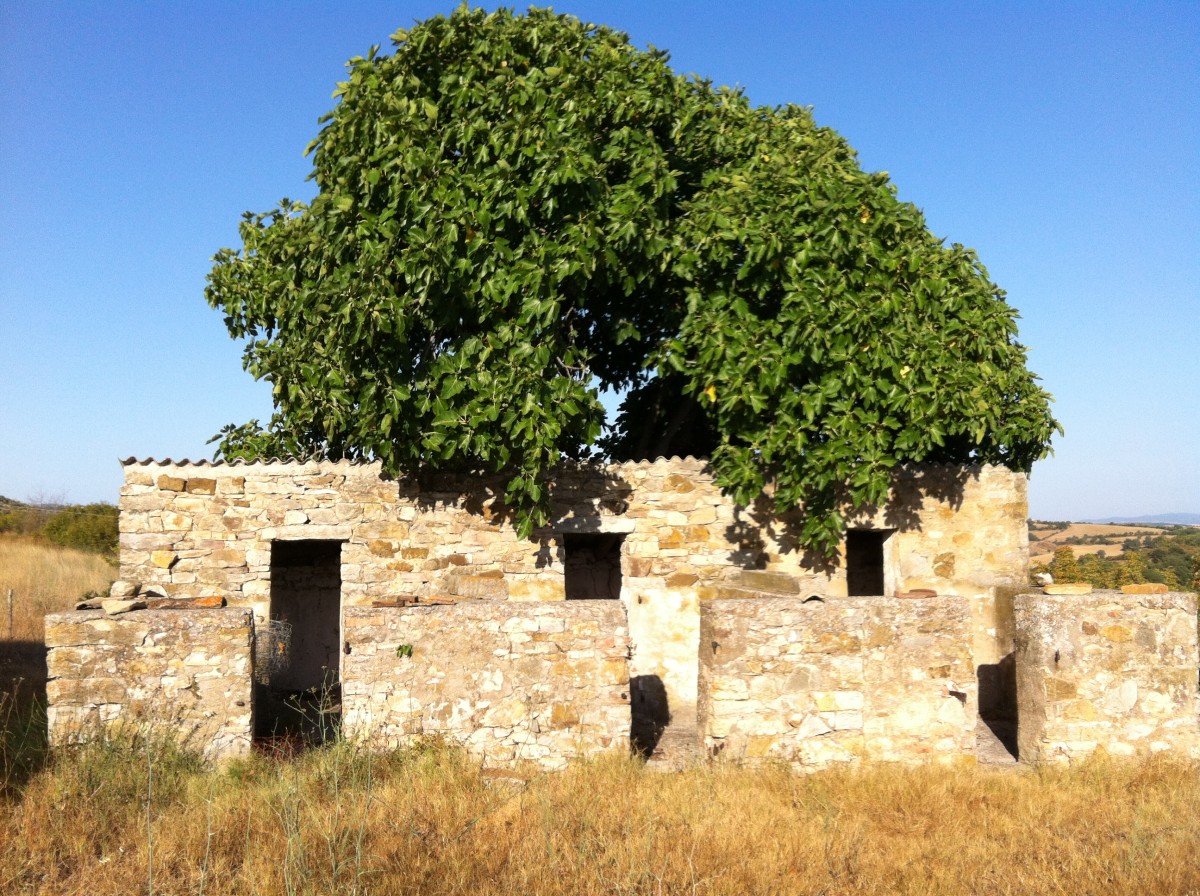Permaculture Solution For A Really Rooty Situation. Sweet Corn Growing Without A Garden Bed
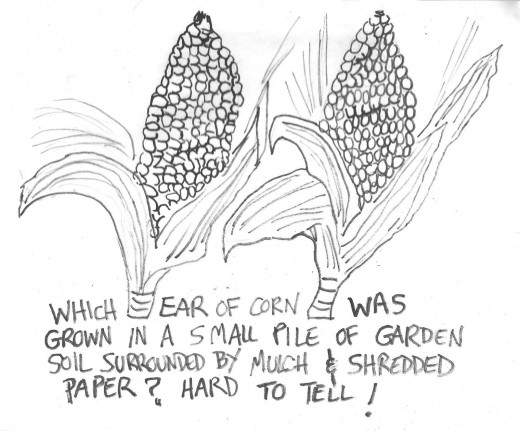
As above, so below
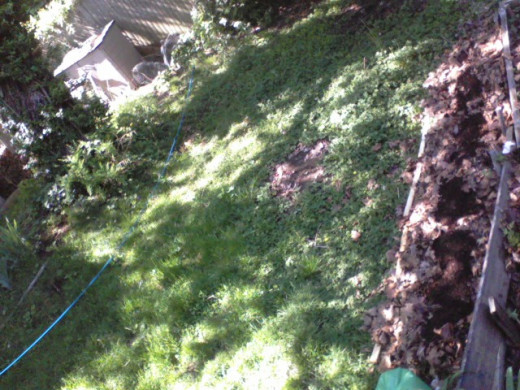
After all the good garden spots have been used
Once the south-facing full-sun well-drained areas have stuff growing in them, it's time to fix up the potential garden spots with issues. In this case, lots of tree roots.
I didn't want to damage the tree's system of getting food and water for itself, but my small backyard is shady and shaped like a cereal bowl. Plantable space is precious. I wanted to start a row of corn next to a couple of raised beds I put it last year. I have corn growing in a raised bed I built over the back part of our driveway, so I needed a place to plant this second variety of corn away from where the pollen from the first corn might blow. I have enough garden problems without frankenveggies.
It was time for a "no-dig" garden! Easy on my back, used fifty cents' worth of materials, and took fifteen minutes.
Bottom layer with an "aisle" of dirt down the middle
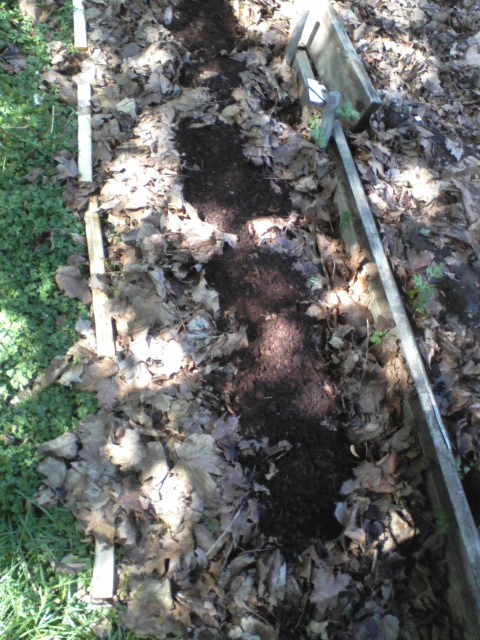
Part of permaculture is using only the space you need
Corn was going in this bed and it grows straight down and straight up. A planted corn kernel needs soil, water & nutrition directed in a circle about a foot across. Anything outside that circle is wasted.
If I'd piled potting soil in a giant running mound in this same sapce, I would have had to work harder to keep the dirt particles in place. Rain plus gravity would have pushed much of the soil down the sides of the mound. I would need solid walls built up to hold the soil in. And I would have needed at least five times the soil I used -- cha-ching! Too expensive.
Leaves are a little acidic, but I already add garden lime because my soil mix (based on peat moss) requires it. I just add a bit more lime to balance out the leaves' pH.
Next, some paper
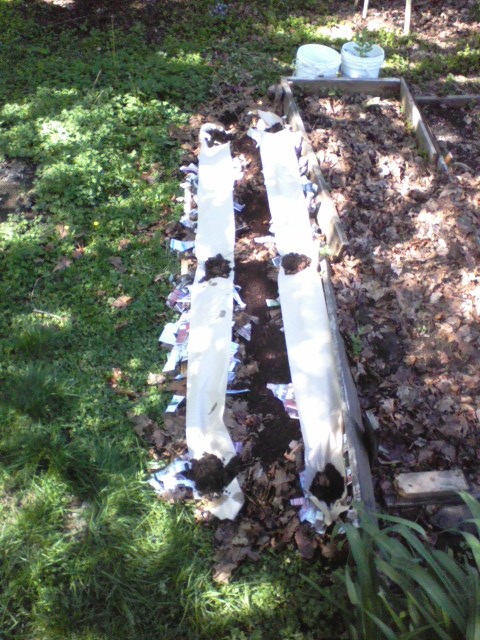
Using what I have
Brown leaves alone aren't enough to build a no-dig garden. They leave big gaps and by themselves, they compost themselves very slowly. So my next layers, to each side of the planting area, were shredded newsprint (I would have preferred paper without ink but this is what I had) and then some brown paper toweling from the janitorial supplies department of an online office store.
This next layer was to stabilize the new bed, help fill gaps, and help the whole thing compost more quickly into a finer soil-like texture. For the soil piles holding down the brown toweling, I used a mixture of potting soil and some leaves and soil dug out of the yard in another spot. This last is to introduce needed microbes into the potting soil, which might not have the helpful bacteria needed.
From now on, I'll have to compensate for too-close planting
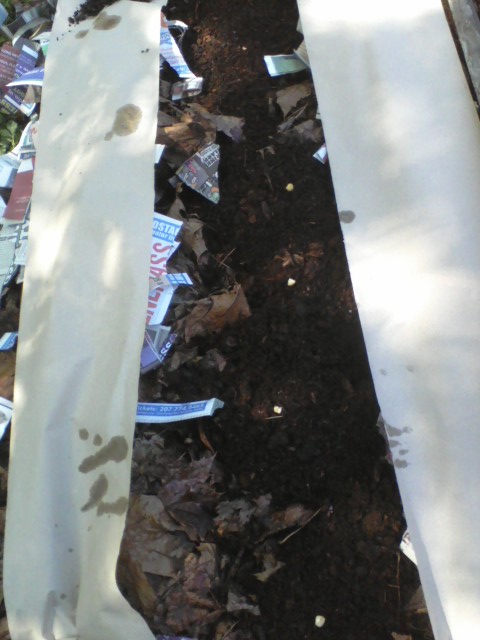
Mounding soil only over corn seeds
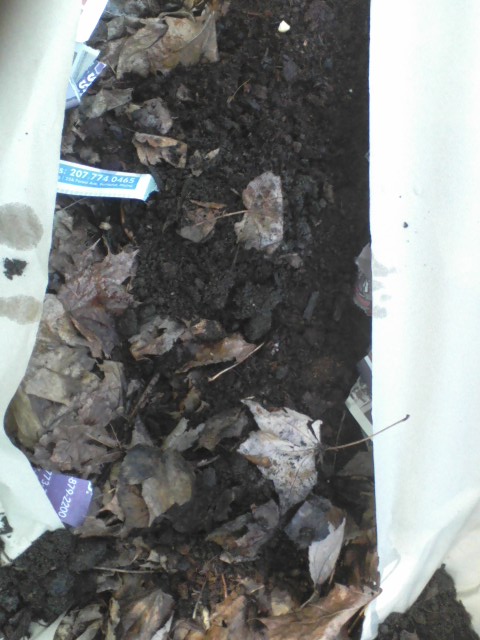
Now, more leaves but just a few on top
Now, more leaves at the sides, with just a few lightly over the planted area. Corn is a nice strong healthy shoot which rises straight up, but I still need to keep the covering light over the planted kernel so the new plant doesn't have to fight its way out.
Added leaves at the sides build up the bed and help keep the soil in place. They also discourage weeds along the growing area.
Directed watering, permaculture style!
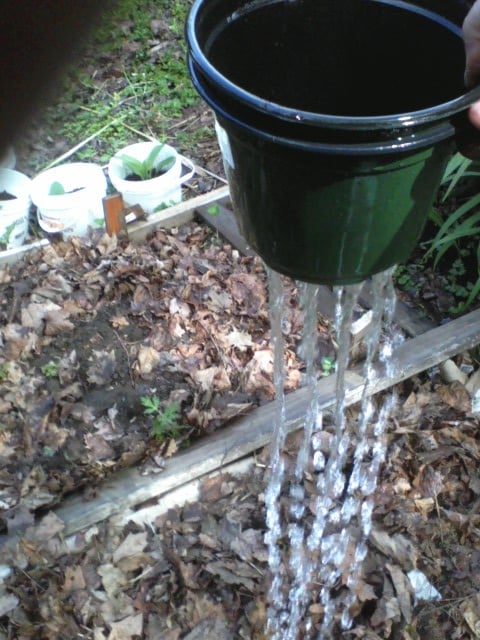
13 and a half minutes later

Using what I got
I've seen permaculture people use everything in the world but plain old dirt to grow their plants in -- sand, straw, sawdust, compost. . . What I have for free here is A. Shredded paper (we get the community papers and there are a lot of them here in this town where ad revenue from pubs and restaurants support journalism. I have a shredder I got at Goodwill for $3 so I can turn those papers into a lot of shredded paper. I would prefer paper without ink, but. . . B. Leaves, mostly maple. I do need to use Compost Quick to help them break down into something closer to compost. I also add garden lime or crushed Tums to balance out the leaf pH which is a little acidic. C. Flattened cardboard boxes. I layer these with the leaves and some compost and some soil to make a base layer, then add looser materials on top, and then plant the individual seeds or beans in little mounds of potting mix.
I also have easy access to peat moss, so that's my not-free-but-cheap basis for a soil mix I make. To the peat, I add potting soil (the kind that costs about $5 for 40 lbs.) and then sand if I have that, and regular old dirt if I have that, plus some compost right out of the bin plus some castings from the worm bin.
I used to make a fancier mix with more expensive ingredients, but I retired early and now I am stretching my budget by working with whatever materials I have handy.
Update! The corn is growing nicely
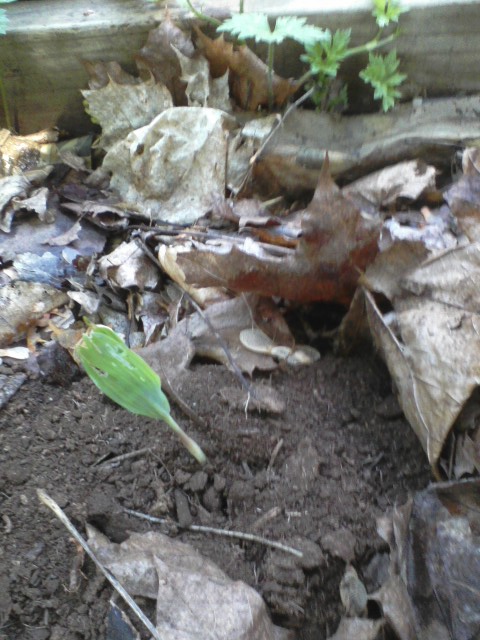
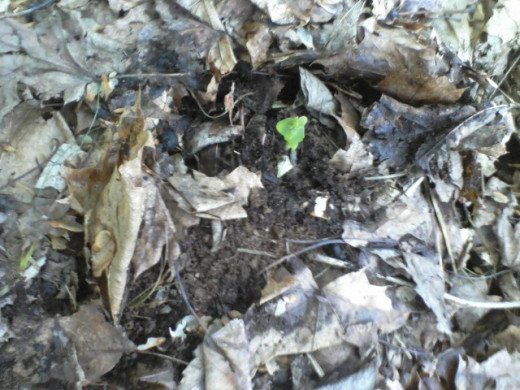
Newest updte! Corn plants look good
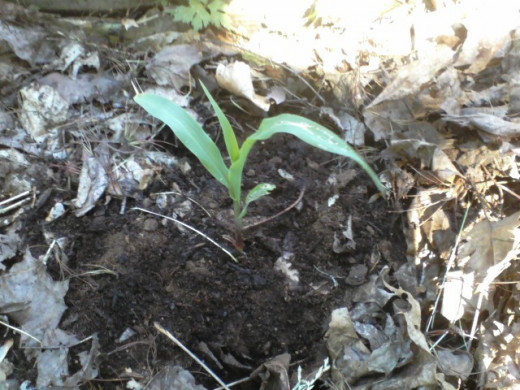

Thank you for reading this!
Whether you have been growing windowsill herbs for many years, tending an acre truck garden on a back lot for the last two years, or you just bought your first packet of seeds, I find it helps to see the real-life experiences of others. In these green living / permaculture / gardening posts, I'm sharing my successes, near-successes, utter failures, and experiments with do-overs in the hope that we can do online what a community garden plot does for people who are neighbors in real life.

